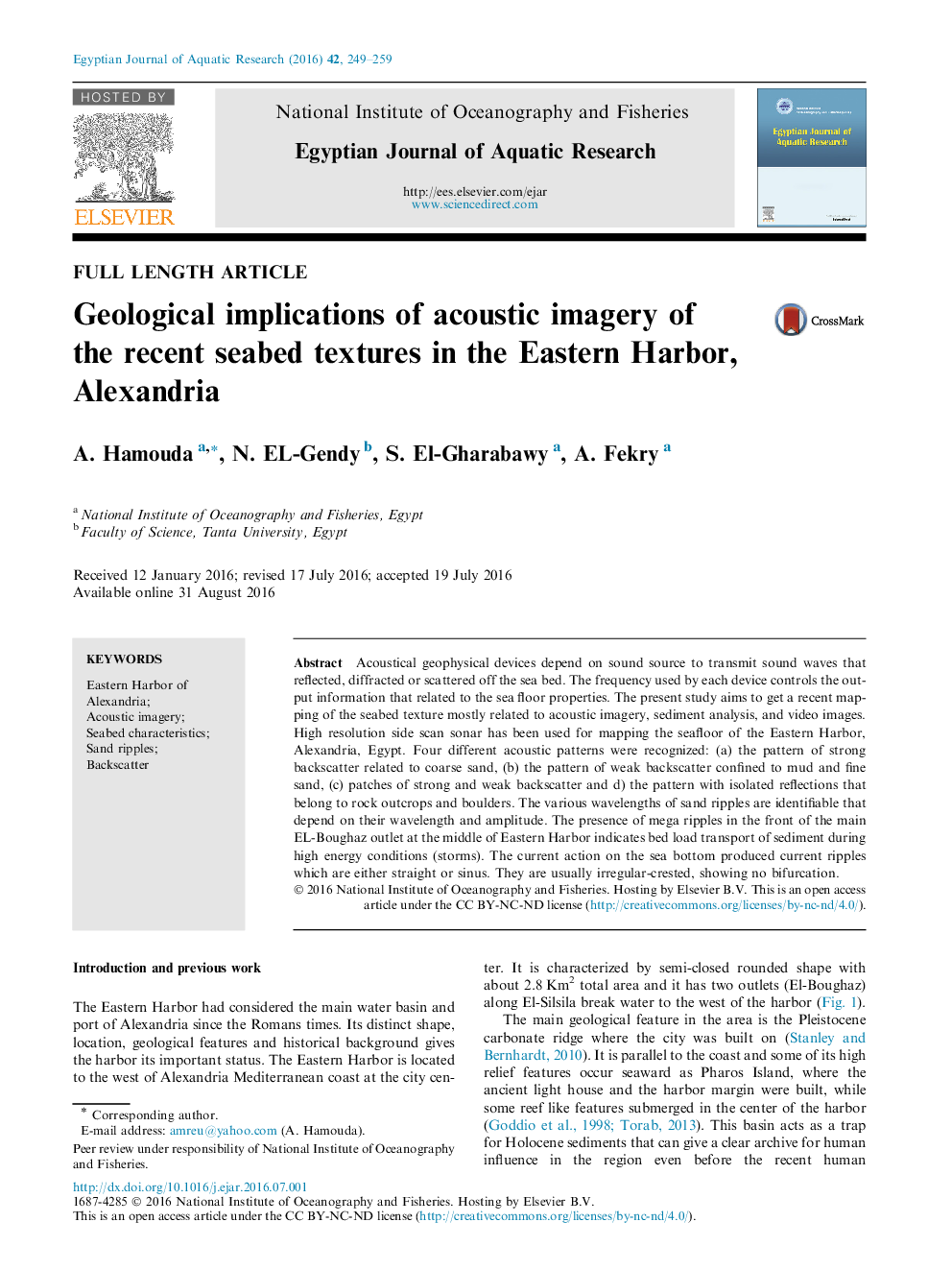| Article ID | Journal | Published Year | Pages | File Type |
|---|---|---|---|---|
| 4493019 | The Egyptian Journal of Aquatic Research | 2016 | 11 Pages |
Acoustical geophysical devices depend on sound source to transmit sound waves that reflected, diffracted or scattered off the sea bed. The frequency used by each device controls the output information that related to the sea floor properties. The present study aims to get a recent mapping of the seabed texture mostly related to acoustic imagery, sediment analysis, and video images. High resolution side scan sonar has been used for mapping the seafloor of the Eastern Harbor, Alexandria, Egypt. Four different acoustic patterns were recognized: (a) the pattern of strong backscatter related to coarse sand, (b) the pattern of weak backscatter confined to mud and fine sand, (c) patches of strong and weak backscatter and d) the pattern with isolated reflections that belong to rock outcrops and boulders. The various wavelengths of sand ripples are identifiable that depend on their wavelength and amplitude. The presence of mega ripples in the front of the main EL-Boughaz outlet at the middle of Eastern Harbor indicates bed load transport of sediment during high energy conditions (storms). The current action on the sea bottom produced current ripples which are either straight or sinus. They are usually irregular-crested, showing no bifurcation.
